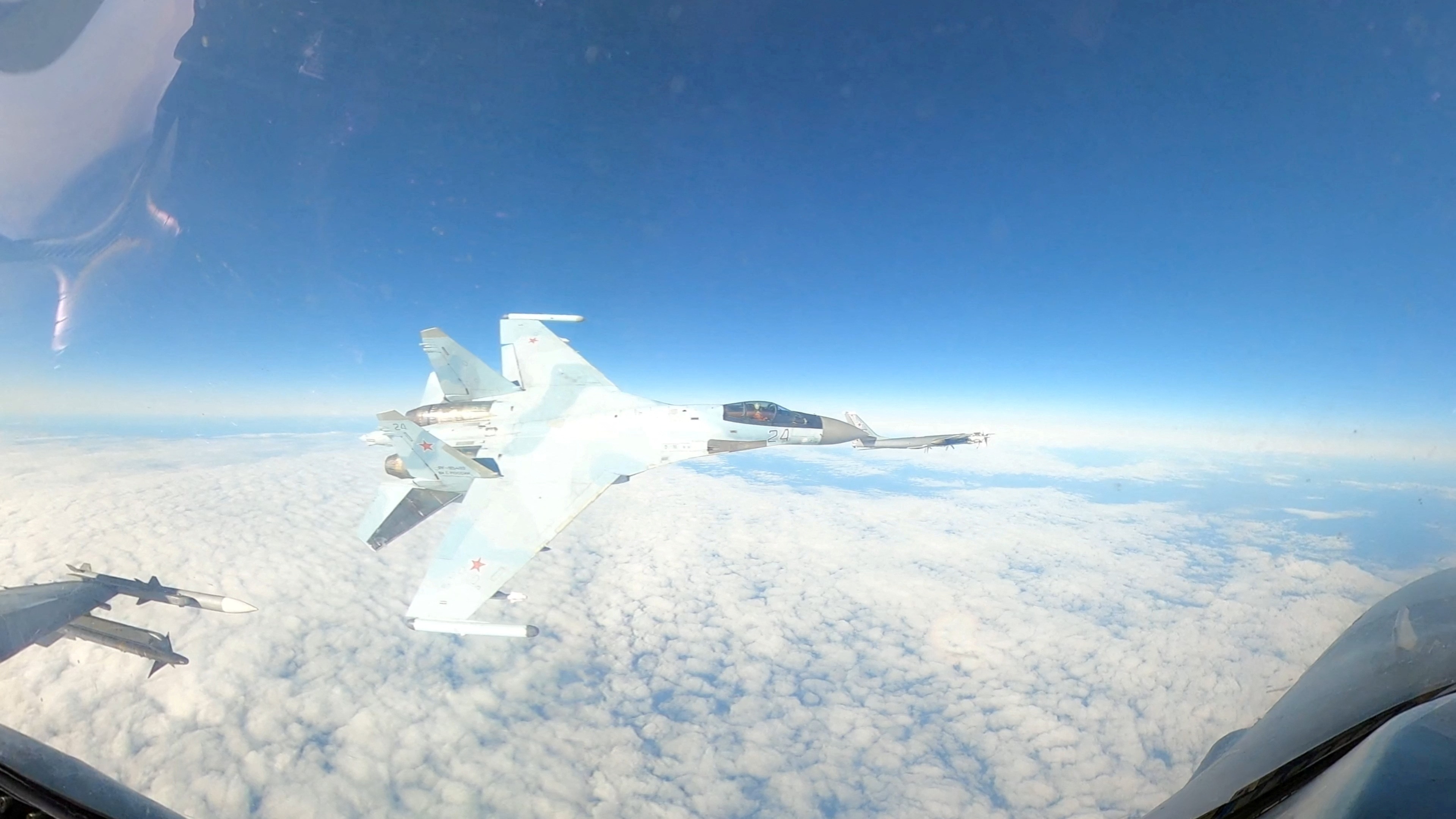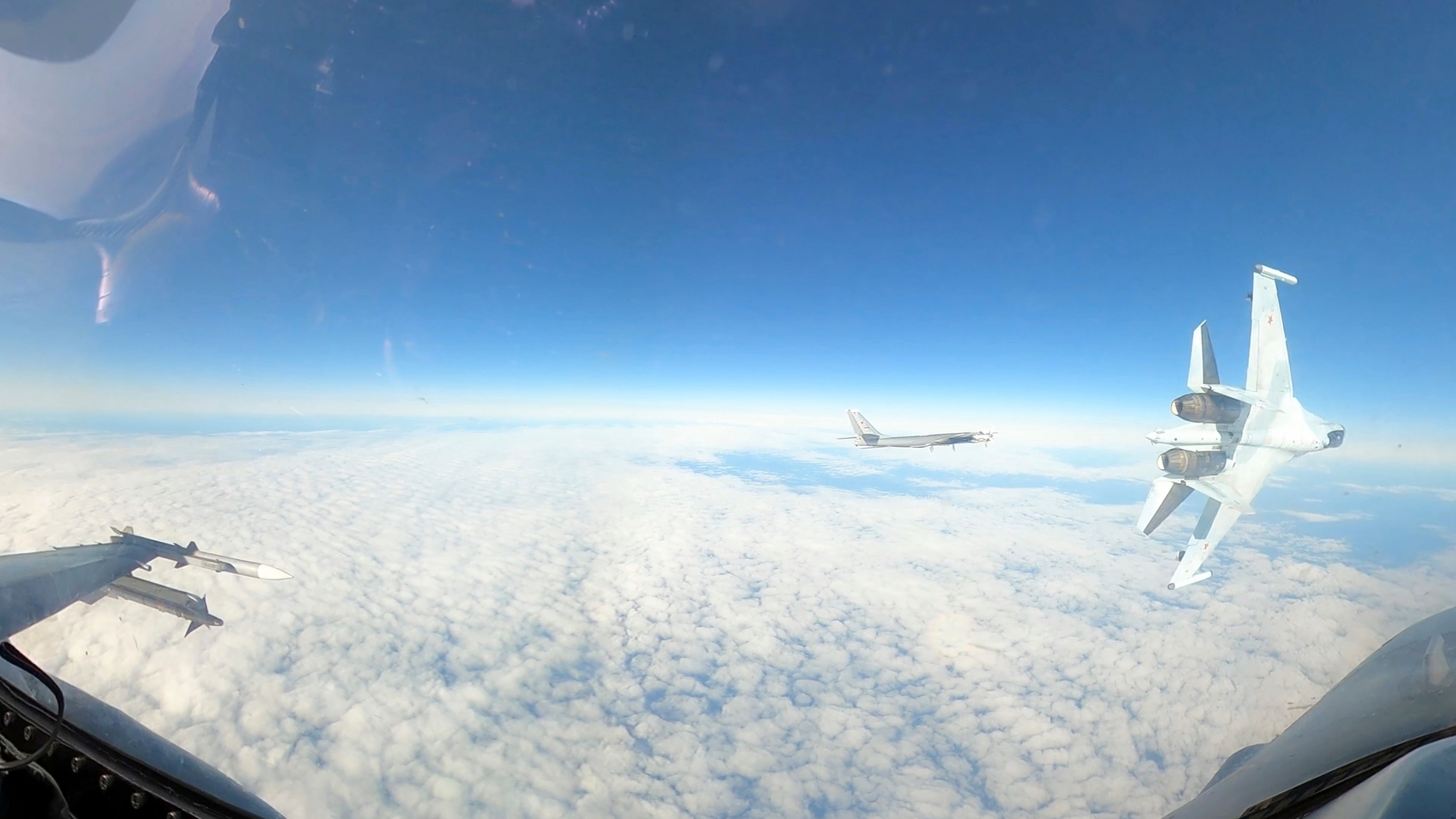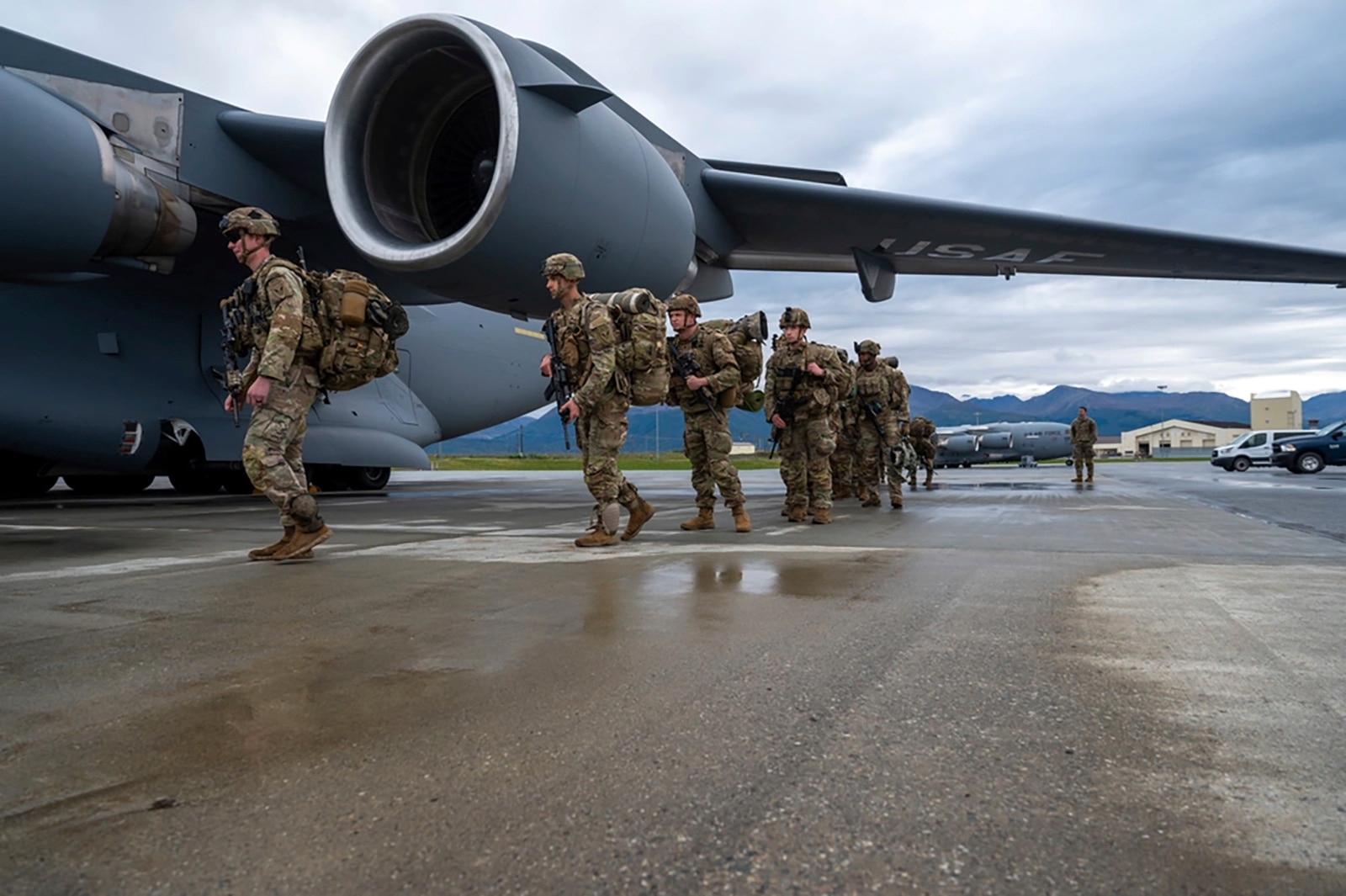Russian Su-35 aircraft shown 'headbutting' a US F-16 fighter jet at close range off Alaska
In short:
US military officials have released video of an encounter near Alaska in which a Russian aircraft swoops across the nose of an American F-16 jet.
The manoeuvre, known as "headbutting", has drawn condemnation from the North American Aerospace Defense Command.
What's next?
US officials said the incident was "reckless and unprofessional", and underscores Russia's escalating aggression in the Arctic.
A Russian aircraft has flown dangerously close to an American F-16 fighter jet near Alaska, conducting an "unsafe" manoeuvre known as "headbutting", the US military said.
The North American Aerospace Defense Command (NORAD) released footage of the incident, which occurred on September 23 during an intercept.
The US regularly carries out aerial intercepts of Russian aircraft in the Alaska Air Defense Identification Zone (ADIZ).
The ADIZ is an area beyond US sovereign air space where aircraft are expected to identify themselves.
Intercepts are usually carried out in a safe and professional manner, US officials said.
But this time was different.

Russia has been slammed for the move, which NORAD said was unsafe.
In footage taken by a 360-degree action cam placed in the F-16's cockpit, you can hear the pilot exclaiming as a Su-35 fighter swoops across the nose of the jet while it was shadowing a Russian Tu-95.
"NORAD aircraft flew a safe and disciplined intercept of Russian Military Aircraft in the Alaska ADIZ," NORAD commander Air Force General Gregory Guillot said in a statement posted on X.
"The conduct of one Russian Su-35 was unsafe, unprofessional, and endangered all – not what you'd see in a professional air force."
The move, known as a "headbutt", isn't always used as an aggressive or unsafe tactic.
NORAD said the US civil air patrol might perform a headbutt if a pilot wasn't responding to radio calls.
Flying through a plane's path provides an obvious visual cue and creates turbulence to get the pilot's attention, it said.
But the manoeuvre is expected to be carried out at a safe distance.

The US military was conducting a routine intercept of a Russian Tu-95 aircraft.
John Conway, managing director of consultants Felix Defence, said there had been an increase in aggressive behaviour in the ADIZ.
By flying in such close proximity to the US jets at high speeds, Russia was not giving the aircraft enough space or time to avoid the turbulence.
"Recent incursions into the ADIZ, which sits outside US and Canadian sovereign airspace, has seen Russian aircrew using a particularly aggressive form of headbutting," Mr Conway told the ABC.
"The Russian intent is to intimidate rather than attract attention, which in extreme cases can induce engine flame out or loss of control."
Spike in Russian military activity
The statement released at the time of the incident said NORAD had detected and tracked four Russian military planes off the coast of Alaska.
"This Russian activity in the Alaska ADIZ occurs regularly and is not seen as a threat," it said.
However, there has been a spike in Russian military activity in the area, which last month prompted the US to temporary deploy about 130 US soldiers with mobile rocket launchers to a remote Alaska island.
The deployment coincided with eight Russian military planes and four navy vessels, including two submarines, travelling close to Alaska as Russia and China conducted joint military drills.
None of the planes breached US airspace.
A Pentagon spokesperson said at the time that there was no cause for alarm.
Mr Conway said the region's strategic importance had grown with the emergence of northern shipping routes between Europe and Asia.
And Russia needed to operate and sustain its nuclear ballistic missile submarine capabilities in the North Atlantic "should conflict with NATO occur in Europe".

US troops were temporarily deployed to a remote island in Alaska after a spike in Russian military activity.
In July, Russian and Chinese bombers flew together for the first time in international airspace off Alaska, a sign of cooperation that US Defence Secretary Lloyd Austin said raised concerns.
Alaskan Senator Dan Sullivan said incidences such as joint Russian-Chinese air and naval exercises off US shores demonstrated "the critical role the Arctic plays in great power competition between the US, Russia, and China".
He described the "headbutting" manoeuvre as "reckless and unprofessional", saying it underscores Russia's escalating aggression.
Russia has not commented on the incident.
The frequency of Russian airplanes entering the zone varies yearly.
NORAD has said the average was six or seven a year, but it has increased recently.
There were 26 instances last year and 25 so far this year.
ABC/Wires
By:https://www.abc.net.au/news/2024-10-01/russia-fighter-jet-headbutt-us-f-16-alaska/104416260(责任编辑:admin)
下一篇:South Korean police officers jailed over deadly 2022 Halloween crush
 Socceroos rescue a point
Socceroos rescue a point  Wallabies thrash Wales 52
Wallabies thrash Wales 52 Jake Paul beats Mike Tyso
Jake Paul beats Mike Tyso Live updates: England vs
Live updates: England vs  US election 2024: Donald
US election 2024: Donald  US election live: Kamala
US election live: Kamala
- ·North Korea's latest weapon agains
- ·Hezbollah says Israel 'cannot impo
- ·Inside the rise of US oligarchs and how
- ·Thailand's worst suspected serial
- ·Tabi shoes are turning heads from Holly
- ·FBI arrests Florida man planning attack
- ·Illegal immigrant gets life sentence fo
- ·Bibles, water, watches and sneakers: Do
- ·North Korea's latest weapon against
- ·Hezbollah says Israel 'cannot impose
- ·Inside the rise of US oligarchs and how i
- ·Thailand's worst suspected serial ki
- ·Tabi shoes are turning heads from Hollywo
- ·FBI arrests Florida man planning attack o
- ·Illegal immigrant gets life sentence for
- ·Bibles, water, watches and sneakers: Dona
- ·US to give Kyiv anti-personnel landmines
- ·An arrest warrant for Benjamin Netanyahu
- ·One of Vietnam's high-profile politi
- ·Shanghai Walmart Attack: A Man Randomly S
- ·South Korean police officers jailed over
- ·Cambodia publicly shames maid deported af
- ·North Korea to use all forces including n
- ·Philippines condemns China attack of Viet
- ·US adds 2 more Chinese companies to Uyghu
- ·North Korean defector steals South Korean
- ·Malaysia deports Cambodian worker for cal
- ·Rebels battle for Myanmar junta’s weste

